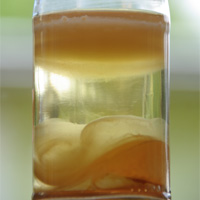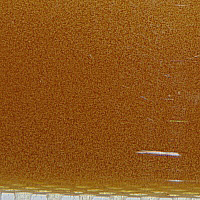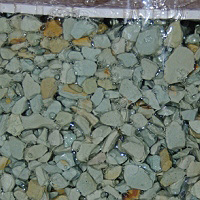Vinegar Production Methods – The Fermentation
Before we start with the vinegar production methods you should know the basics about vinegar. Vinegar is a mixture of acetic acid and water. Quality vinegar for the food sector comes from a natural process called vinegar fermentation, where alcohol is transformed into vinegar by vinegar bacteria. Hence, apple vinegar comes from apple wine, wine vinegar comes from white or red wine vinegar, and beer vinegar comes from beer.
In addition to alcohol, the vinegar bacteria also require oxygen. For high-quality vinegar, the proportions of acid, alcohol and oxygen in the fermentation medium must be matched to each other. Otherwise there can be problems with the fermentation and unwanted by-products that sometimes have a serious negative effect on the taste and smell of the vinegar. In addition to having the right fermentation temperature, the appropriate acid content can prevent pests such as vinegar eels or infections such as yeast film.
There are essentially three vinegar production methods for establishing contact between the liquid fermentation medium and the (air) oxygen: the surface, submersion and captive processes (see how to make vinegar).
Three Vinegar Production Methods
Surface process (Orleans process)

The surface process, or Orleans process, is the least demanding variant technically and therefore perfect for the first homemade vinegar. In simplified terms, a container with alcohol and vinegar bacteria is left to stand open, and the well-known mother of vinegar forms. The fermentation medium only has contact with the air via the surface of the liquid and is therefore uneven, so that only a tiny proportion of the medium is affected by it. Even if air pumps are used, the results are mostly unsatisfactory, especially in the household sector, because of the unavoidable odor and taste defects.
Submersion process (acetator process)

In contrast, when the submerged or acetator process is used, the bacteria are constantly submerged in the liquid. Pure oxygen is blown into the fermentation medium. Because all the process parameters can be controlled and automated very precisely with this process, and also continuous operation is possible, industrially fermented vinegars are made almost exclusively using this process. Most quality vinegar producers also work using this principle. However, it has the disadvantage that it can only be used to a certain extent to make extract-rich (flavor-intensive), viscous types of vinegar. In addition, such systems are usually not productive for hobbyists or small commercial producers due to the high acquisition costs and ongoing costs.
Generator process

In the generator process, the bacteria adhere to a carrier material (filling material), on which they are more or less “trapped”. Unlike the two previous variants, the bacteria are not constantly located in the fermentation medium. Instead, the filling material is periodically sprayed with the fermentation medium. For the bacteria, this has the advantage that sufficient oxygen is always available during the spraying breaks, yet at the same time no alcohol shortage occurs. Likewise, in contrast to the other processes, there is little likelihood of the bacteria degenerating due to an overabundance of alcohol, with negative consequences for the vinegar production. Therefore, a vinegar making equipment using the captive process is best suited to making high-quality vinegar yourself.
